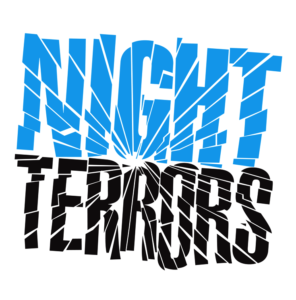Doctors’ Notes
BackNight Terrors
Because sleep during infancy is constantly changing and developing, it’s difficult to label any disrupted sleep event in an infant. But since the issue was raised here on our Facebook page, let me address the classic description of Night Terrors.
Night Terrors fall into a category described as Parasomnias. Parasomnias are a type of sleep disorder that involves some sort of action or movement — including sleep walking, sleep talking, and night terrors. The cool, interesting, somewhat startling thing about parasomnias is that during all these actions, the child is alseep. (We know, and define, this by their brainwave patterns.)
 Night Terrors, which typically occur between the ages of 2 and 6, can be jolting and even outright frightening to the parent, babysitter or caregiver present during the occurrence. The actions/movements associated with Night Terrors are abrupt “bolting up out of bed,” shrieking, crying and screaming. The episodes are frequently brief, around 5 minutes, though some can last up to 20 or 30 minutes. Besides the obvious — the significant distress the child appears to be suffering — another worrisome component for any caregiver is that the child doesn’t easily “come out of it” when you engage and attempt to soothe her. At times, the child may even become combative as you attempt to interact with him.
Night Terrors, which typically occur between the ages of 2 and 6, can be jolting and even outright frightening to the parent, babysitter or caregiver present during the occurrence. The actions/movements associated with Night Terrors are abrupt “bolting up out of bed,” shrieking, crying and screaming. The episodes are frequently brief, around 5 minutes, though some can last up to 20 or 30 minutes. Besides the obvious — the significant distress the child appears to be suffering — another worrisome component for any caregiver is that the child doesn’t easily “come out of it” when you engage and attempt to soothe her. At times, the child may even become combative as you attempt to interact with him.
These events, like other Parasomnias, occur during transitions between different stages of sleep. They most commonly occur in the first third of the night (in contrast to nightmares, which tend to occur in the last third of the night, when REM sleep occurs more often). They can occur repeatedly, occasionally, predictably, or erratically. Familial patterns can be identified but don’t have to be present.
Typically, and also paradoxically, these events most often occur when a child is overly tired. I can’t tell you how many times parents tell me something like: “We walked around Kennywood all day and didn’t get home til 9PM… He was exhausted…I thought he’d sleep like a log… Then one hour after going to sleep, Bam!…” The child is shooting up out of bed, screaming, crying, and pushing her parents away as they come into her room to hold and comfort her. Even more perplexing is that, after spending 5, 10, or 15+ minutes during the episode, the child will have NO recollection of the event the following day. (Again, in contrast to a nightmare, of which a child may have vivid recall.)
Other triggers for these episodes can include stressors and illnesses.
TIPS FOR AVOIDING & DEALING WITH NIGHT TERRORS
- Avoid letting your child becoming overtired (missed naps, exhausting day).
- Illnesses can be a trigger for night terrors. (So be aware that they may occur.)
- Stressors (moving, travel, loss of a pet, household disharmony) can be a trigger for night terrors. Try to reduce or minimize the effects of stressors when possible.
- If your child has a Night Terror, go in and assess the situation. If the event seems to be a Night Terror, observe the child and make sure that the actions and environment are safe and not putting him at risk of bodily harm. It’s best if the child stays in her room and bed to ride out the event.
- Don’t try to wake a child out of a Night Terror. (This action is more about making the observer feel better than about what the child needs; being awoken out of a Night Terror can unnecessarily distress a child.)
- Don’t keep trying to discuss the event with the child the next day. (She won’t remember it! The more you push, the more likely she will become frightened, embarrassed, or uncomfortable.)
In the end, remember that while Night Terrors can be extremely distressing to the observer, the child is usually unaware and unaffected.
Dr. Wolynn, the President and CEO of Kids Plus Pediatrics, is clinically trained, nationally renowned expert in pediatric sleep issues.